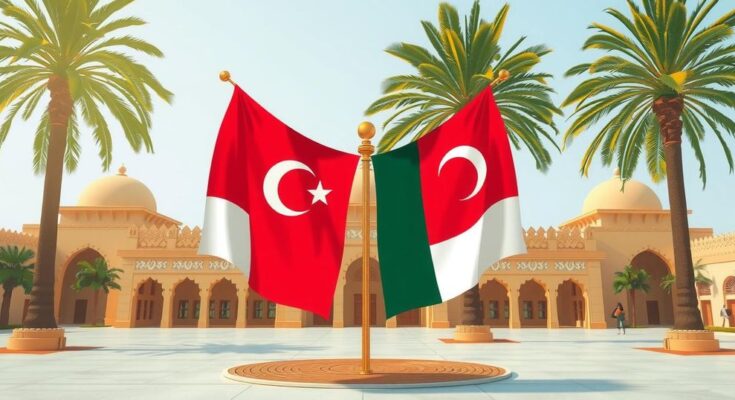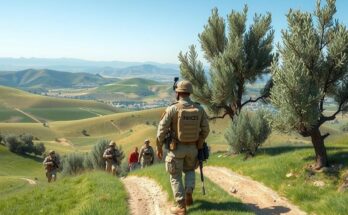An Emirati diplomat, Anwar Gargash, met with Iran’s Foreign Minister to discuss a letter from President Trump aimed at reviving talks on Iran’s nuclear program. Iran’s Supreme Leader has expressed skepticism towards negotiations, while economic and military pressures intensify amid uranium enrichment. The geopolitical landscape remains fragile, with potential consequences for regional stability.
On a recent Wednesday, an Emirati diplomat, Anwar Gargash, met with Iranian Foreign Minister Abbas Araghchi in Tehran. This meeting was characterized as significant due to Gargash’s role in delivering a letter from U.S. President Donald Trump that aims to rekindle discussions regarding Iran’s advancing nuclear program. However, the reaction from Iran remains uncertain, particularly given Supreme Leader Ayatollah Ali Khamenei’s stance against negotiations with the United States, whom he labels as a “bullying government.”
Trump’s letter, revealed during a television interview, expressed a hope for negotiations while acknowledging possible military action if diplomatic efforts fail. The absence of specific details regarding what the letter proposed to Iran adds to the intrigue surrounding this development. Historically, Trump’s attempts at direct communication with Khamenei have met with skepticism, evidenced by Khamenei’s dismissive response to a previous letter sent through a Japanese intermediary in 2019.
Currently, Iran is in a precarious economic position exacerbated by Western sanctions, and escalating tensions over its nuclear program heighten fears of a military confrontation. Iranian officials assert the intent of their nuclear program is peaceful, but they have concurrently signaled a willingness to develop nuclear weapons as tensions with the U.S. persist. The enrichment of uranium has reached concerning levels, raising alarms for both Israel and the United States.
In light of these developments, Israeli officials have hinted at military action against Iran’s nuclear facilities, reflecting the complex and turbulent geopolitical landscape. Since Trump’s re-election, his administration has reiterated the necessity of preventing Iran from acquiring nuclear weapons. Reports from nuclear watchdogs suggest that Iran has significantly intensified its production of near weapons-grade uranium, raising the stakes further.
Additionally, Iran’s broader social challenges, including rampant unemployment and ongoing protests against mandatory hijab laws, complicate the internal landscape amidst these external pressures. The situation remains tense as both Iran and the United States navigate their fraught relationship while grappling with regional dynamics, particularly regarding Israel and ongoing conflicts in neighboring territories.
The recent diplomatic engagement by an Emirati diplomat highlights the complexities surrounding U.S.-Iran relations amid escalating nuclear tensions and economic hardship within Iran. Given the historical context of Trump’s prior communications with Iranian leaders, future responses from Iran remain uncertain. The precarious economic situation in Iran, compounded by the potential for military confrontation over nuclear advancements, adds layers of urgency to ongoing discussions, while the social fabric of Iran faces internal challenges amid external pressures.
Original Source: www.nsnews.com




